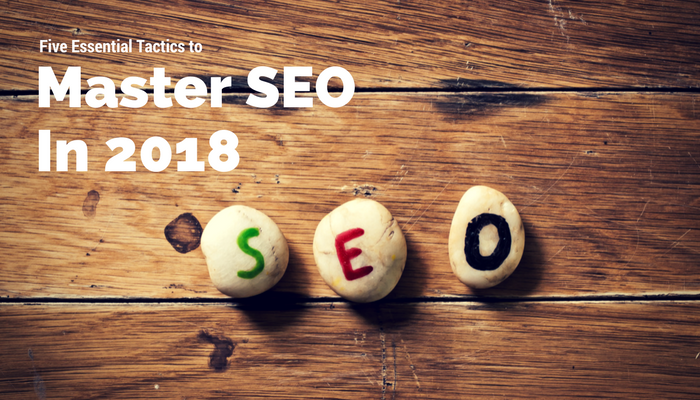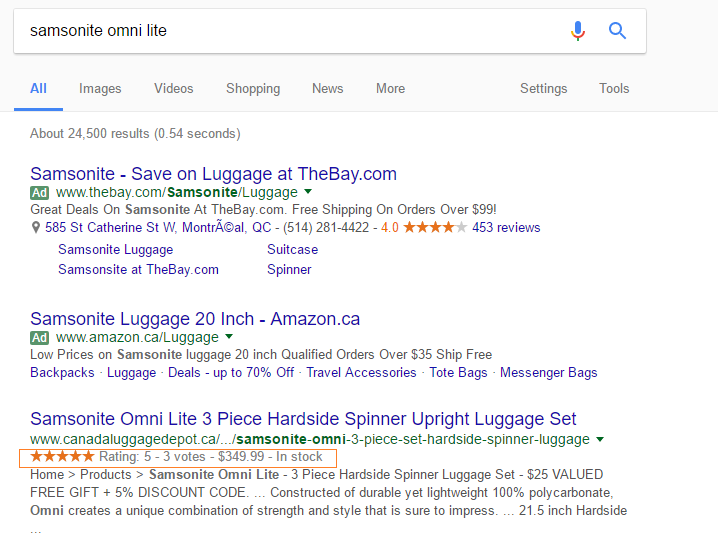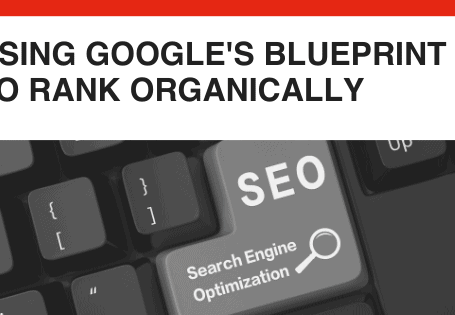Five Essential Tactics to Master SEO in 2018
By: Rank Media

*Author’s note: initial post was written for 2017. This has been updated to reflect changes for 2018.
There have been quite a few significant updated in the realm of search engine marketing. While some of the updates focused on the paid side (removal of right column ads, expanded text ads, responsive display ads, etc.), other updates focused on organic traffic. Some of the key updates included the following:
- Removal of right-column ads. While this was more of a paid search update, the impact is felt on the organic side as desktop searches show up to four ads at the top of search results.
- Mobile-friendly update #2. Google launched a second algorithm update a year after “Mobilegeddon,” which gave mobile-friendly websites a boost in rankings on mobile devices.
- Local search algorithm update. Unofficially named Possum, this local search update (while unconfirmed by Google) made a significant change in local search results. Duplicate business listings are filtered out, and more relevant results are shown based on search queries.
- Penguin 4.0. Google *finally* launched a new major Penguin update after a couple of years. Penguin also now runs in real-time and is included in the core algorithm (like Panda).
- Google announce the launched of a mobile-first index, expected to rollout sometime in 2018.
- The Google Search Console was updated to a new interface, looking sleeker and providing webmasters with data past 90 days.
With regards to 2018, there are a couple of elements you need to master to see a significant return on investment from SEO. Some of these are basic and have been known for quite some time, whereas others are related to recent trends and updates.
#1: Master Keyword Research & Content Marketing
Keyword research is more important now than ever before due to the updates that Google has applied to its core algorithm over the past couple of years. Additionally, RankBrain, Google’s machine learning artificial intelligence program used to process new search queries, helps the search engine giant put things into context rather than relying on metadata. By processing information on a contextual level, Google can serve more relevant results.
How does this help you when it comes to SEO? By utilizing keyword research tools and digging into search trends, you can base your content marketing strategy and website content around popular search queries, long-tail questions, and other terms that will help you capture more traffic. It’s also important to utilize phrase matches and synonyms within your content rather than using the same focus keyword continuously.
Additionally, optimizing your content for voice search will become increasingly important in 2018. With voice search usage increasing and home assistants being adopted by users across the globe, ensuring that your content and business can be found via answer engines will be essential.
#2: Implement Schema Markup
An integral part of our auditing process for new SEO clients is to evaluate the schema markup used on websites. Often, we come across websites that have not yet integrated schema markup. What is schema markup? Schema.org is a collaborative project sponsored by Google, Microsoft, Yandex, and (now formerly) Yahoo! with a singular mission to promote schema for structured data on web pages, email communications, and more.
This collection of HTML tags can help submit structured data to search engines so that the information appears as rich snippets. This type of onsite optimization is used to create rich snippets for products, videos, events, music, organizations, people, recipes, and ratings. As illustrated by the sample search below, rich snippets stand out for product searches by displaying price, stock availability, and ratings/reviews.

3. Optimize Your Local Business Listings
As a general web user, nothing frustrates me more than coming across business listings that are either incomplete or display inaccurate information. I’ve had countless experiences where I have shown up to a local business that had either closed permanently or changed store hours without submitting those updates to Google. With mobile usage increasing month-over-month, local businesses cannot afford to ignore the digital realm anymore, especially with savvy marketing professionals and small business owners capitalizing on recent internet trends.
According to the Mobile Playbook, 20% of all searches made on Google & Google-owned properties are made with local intent. If you think that’s crazy, just look at the impact local searches can have on businesses:
- 94% of smartphone users search for location information.
- 51% of users visited a store.
- 48% of users called a store.
- 29% of users made a purchase at a retail location.
- 80% of mobile searches triggered store visits within five hours of the initial search.
- 85% of mobile searches triggered calls to stores within five hours of the initial search.
As mobile becomes more relevant for SEO and lead generation, it’s crucial to not only own your local listings but to ensure that it is updated with photos and contains accurate information. You can capture a great share of traffic on Google alone by optimizing your Google My Business profile and encouraging satisfied customers/clients to leave glowing reviews.
4. Build Relevant & Valuable Links
Search engines no longer put a value on the number of inbound links a page has to establish authority. These days, search engines expect you to earn any link pointing back to your site by investing resources into creating great content. There is often a debate about the importance of links in the future, but Google has stated that content and links are the top two ranking factors, so don’t discount the power of link building yet. Of course, spammy links are terrible, so please don’t attempt to circumvent Google’s guidelines and annoy webmasters like the guy below.

The best approach to link building is to create amazing content and linkable assets for your own website. The development of infographic, whitepapers, case studies and resources can lead to other websites within your niche referencing your site as an authority. Additionally, seeking out relevant sites and content publishers can help you find opportunities to submit content or generate a link back to your site that is legitimate and in accordance with Google’s webmaster guidelines. Stay away from link farms, sponsored links, or any other black-hat tactics, or else you may find your website in Google’s penalty box.
#5: Make Mobile a Priority
If “Mobilegeddon” and the subsequent update a year later wasn’t enough to convince you that mobile was important for SEO, here are a few reasons why you should make it a priority in 2017.
Mobile-First Index
Google’s mobile-first index is launching in 2018. Of course, this will not change much for websites that are responsive because the content is the same for both mobile and desktop devices. Additionally, this will not affect websites that are not mobile-friendly, as the content is the same on both types of devices. Issues will arise for websites that show different content on mobile and desktop devices. For example, if you have a regular website for desktop traffic and a “m.” website with streamlined content, Google’s mobile-first index will rank your website based on what it sees on mobile devices. This could mean Google is seeing less content than it would if it crawled the desktop version of your website.
Therefore, it’s important to prepare for the new mobile-first index and make sure that your mobile version is accessible to search engine bots.
Google AMP
Google’s open source initiative, Accelerated Mobile Pages, has been gaining traction over the past year. More publishers are jumping on board and implementing a stripped-down version of their website purely for mobile devices, which load quicker than the regular version and have a “AMP” label in search results. While it seems like only news-based sites reap the benefits of AMP implementation, it is expected that Google will display the AMP-enabled link of a page within organic mobile results if it’s available. For example, if you have a page ranking high on mobile devices and have an AMP-enabled equivalent page, Google may show the link for the AMP page instead of the original. The main benefit here is a potentially high click-through rate due to the AMP label. While this is not in effect yet, you should at least plan to enable AMP for any blog/news related pages on your website.
Penalty for Intrusive Interstitial Ads
As of January 10, 2017, content pages not easily accessible to users on mobile devices from an organic search may be subject to a penalty and may see a decrease in rankings. Google’s transition to mobile-first has opened fire on websites that push annoying interstitials and pop-ups on mobile websites that may harm the overall user experience. Keep the UX clean on mobile devices and focus on converting users naturally rather than shoving interstitials in their faces.
SEO Isn’t Dead
The claims of SEO being dead have been around for years, but time and time again, those claims end up falling on deaf ears. However, the world of search engine marketing has evolved quite a bit over the past 10 years, which is why it’s important to be aware of the latest trends. Mastering search engine optimization is no small feat. It takes several skill sets to rank highly: content writing, programming, email marketing (reaching out to publishers), analyzing data, etc. However, if executed perfectly and strategically, the return on investment can be immense. You just have to be patient, though. Search engine optimization is a long-term strategy, but worth it in the end.
Are you ready to get ranked in 2019?







 (800) 915 7990
(800) 915 7990
